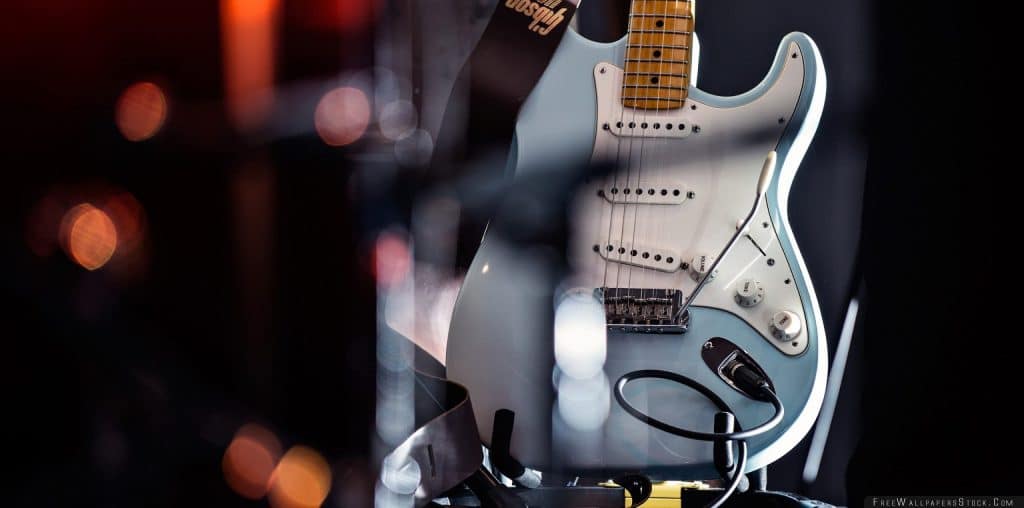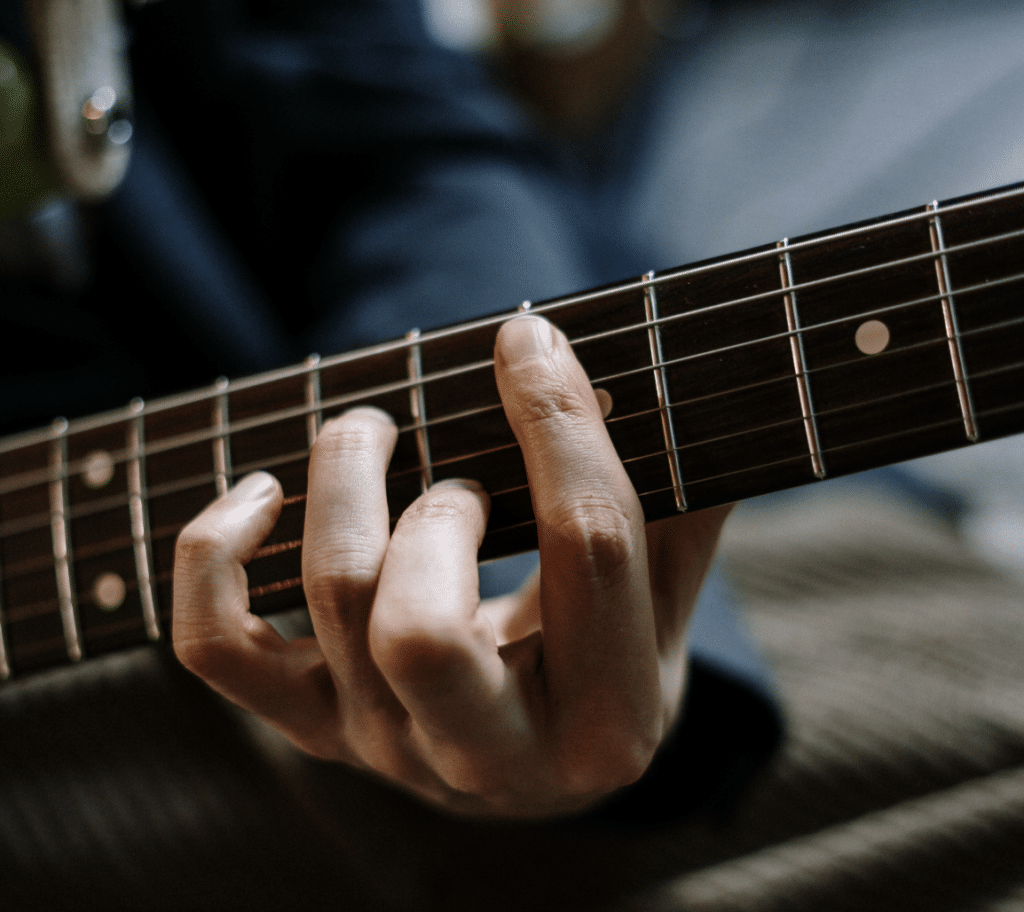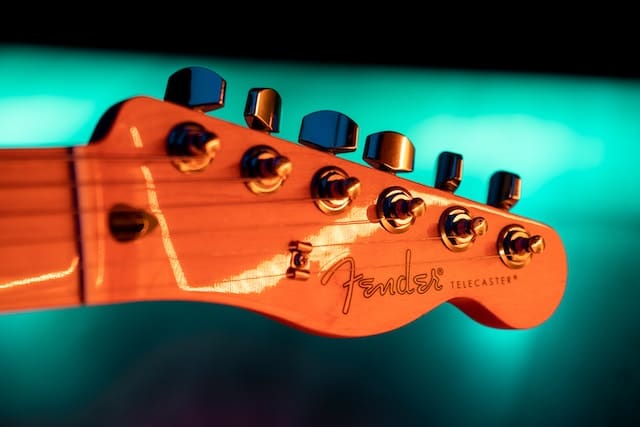Budget electric guitar – what to expect for the price
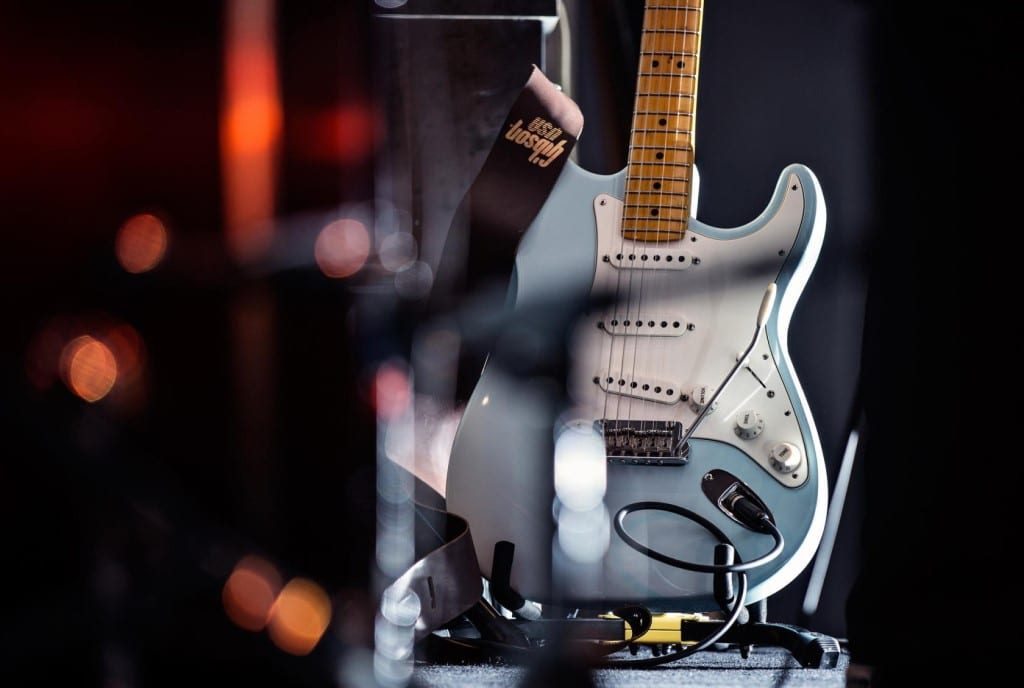
Even at the price range in context, there is no one-size fits all guitar. Hundreds of budget models are geared differently, meaning you can only get what suits your style. For instance, the Schecter OMEN-6 and Ibanez RG8 will appeal to metal lovers, while the Epiphone DOT is a great choice for blues, jazz, and maybe rock, yet they are some tens of bucks apart.
One thing you should not pay too much attention to in this price range is the brand. While Fenders and Gibsons are everyone’s dream, you don’t need to struggle to afford one when an Epiphone or a Yamaha provides similar sound and looks for half the price. And while every instrument will claim to be the best for the budget, be sure to check the reviews for any guitar you want to buy. Some manufacturers like to take shortcuts at the expense of quality.
You can also expect to find a wide range of color options. While you can always choose what appeals to you, remember that your guitar’s appearance can set the mood in the room and boost your crowd’s energy.
That said, read on to know what to look out for before you buy.
Body types of electric guitars
Electric guitars come in three distinct body types:
Solid body electric guitars
These are made of solid wood and happen to be the most popular guitars among expert guitarists. They are characterized by high resistance to feedback as well as a greater sustain than other guitar types. On top of that they have an extremely powerful distortion that makes them perfect for metal and rock. The Squier by Fender Classic Vibe 50’s Stratocaster is a good example in this respect. Others include the famous Telecaster and Super Strat versions.
Semi-hollow guitars
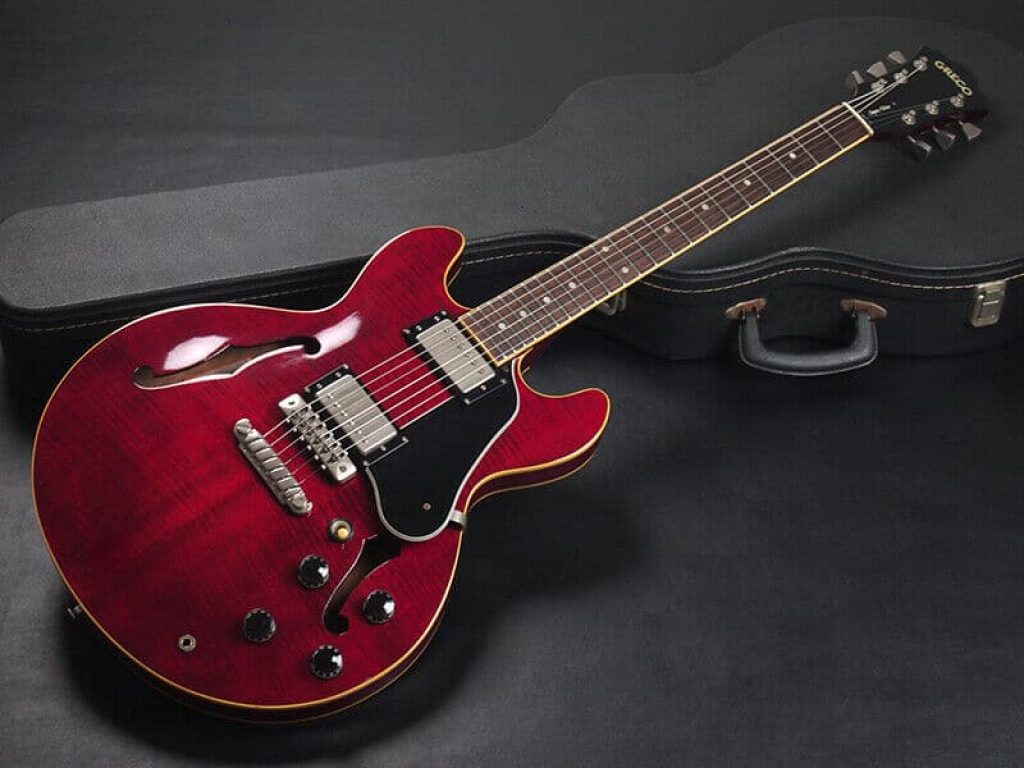
Featuring exposed openings, these guitars usually have f-shaped holes on their resonating box. They look stunning and mimic big violins. Construction-wise, they are much lighter than solid guitars and people tend to say they are quite versatile. They sound warm and bright with nice overtones and thus, preferred for jazz, blues, and country.
Hollow body guitars
Though they sound almost the same as semi-hollow types, their bodies are without the wood block that runs down the middle of semi-hollow guitars. This slight variation makes hollow body guitars to produce a more natural, acoustic-like sound. However, they are prone to feedback particularly in higher volumes. Even so, their full tone with impressive bass response bring a smile to face to the face of a jazz player.
Electric guitars maintenance tips
Regular maintenance is key to longevity in both sound and appearance. Below are the standard measures to care for your guitar:
- Change the strings regularly to keep your instrument sounding nice throughout.
- When changing strings, clean the fretboard to remove dust and dirt build-up. A soft bristle brush should deal with stubborn grime.
- Wipe down your fretboard every time you play; this reduces buildup of dirt, oil, and grime.
- Avoid leaving your instrument in extremely hot or cold areas; the wood might expand or contract unpleasantly.
- Clean and polish your instrument more regularly to keep the finish looking shiny and enhance the appearance of the wood.
- In dry weather, humidify the air where your guitar is stored. Dry air can cause cracks, bends or create dips.
- Take care when handling your guitar to avoid scratching it. Things like zipper jackets, rings, necklaces, and belts should never come close to your instrument.
- Once in a while, take your guitar to a technician for deep checkup such as neck alignment and loose frets.
Features to consider while buying the best electric guitar under $500
This is where we get more specific on the tiny details.
Size and weight
Guitars come in various sizes, which impacts playability in terms of the sound and your ability to hold it comfortably. If you need to travel with your guitar, it must be compact enough for the purpose, like the Traveler Guitar TB-4P. Again, you can only carry what you are comfortable with.
Pickups
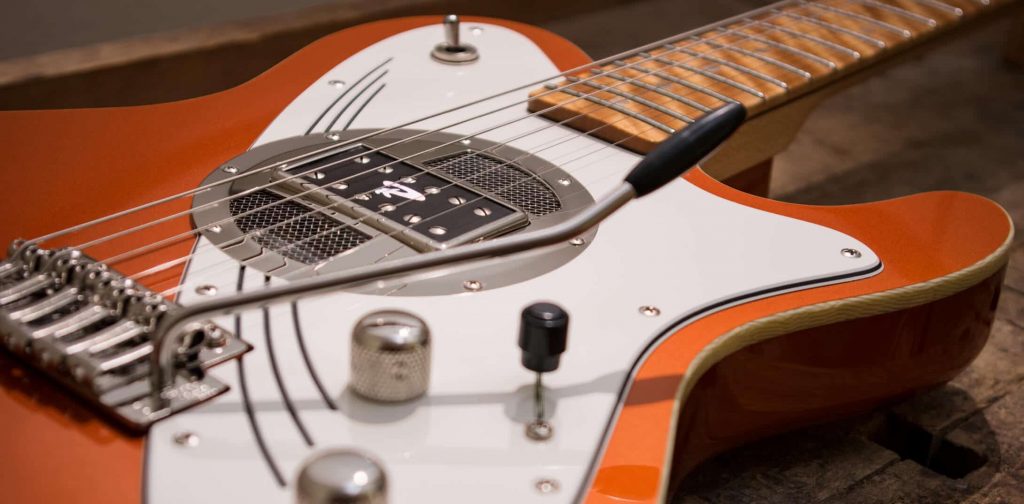
In this price range, you can expect to find the most basic pickups including humbucking, single-coil and filtertron pickups.
Single-Coil pickups have a wire that’s wrapped around a single magnet, thus producing crisp, mellow tunes, yet high on the hum or echo factor. They usually emphasize on the higher frequencies.
Humbucking involves two magnets fixed parallel with opposite ends facing each other. The hum factor is a bit low and the tone is quite thick.
FilterTron pickup is a hybrid between a Single-Coil and Humbucker pickup. They are similar to humbuckers in shape and size, though the dimensions may differ.
Of course, there are many other pickup types but they are usually unavailable at budget price. Recent advancements have also made it possible for humbuckers to sound like single coil guitars through a technique known as “coil tapping”, allowing for flexibility that was difficult with older guitars.
Tonewood
Wood plays a significant role in determining the overall tone of a guitar. It is the resonance from the wood that determines how long the strings vibrate as well as allowing the pickup to move. Let’s look at the different types of wood used in guitar construction and the impact they have on sound.
Mahogany
This dense, strong wood is used in constructing all parts of a guitar except fretboards and bridges, which require a more solid wood. You may also find combinations such as a mahogany neck and back with maple top – common with short-scale guitars, or an all-mahogany body and neck excluding the fretboard.
Mahogany is not a very hard wood naturally and because of that, it emphasizes on midrange and bass frequencies for a mellower tone. And since mahogany is very resonant, it enhances a guitar’s sustain. This wood is also aesthetically appealing due to its rich brown color.
Maple
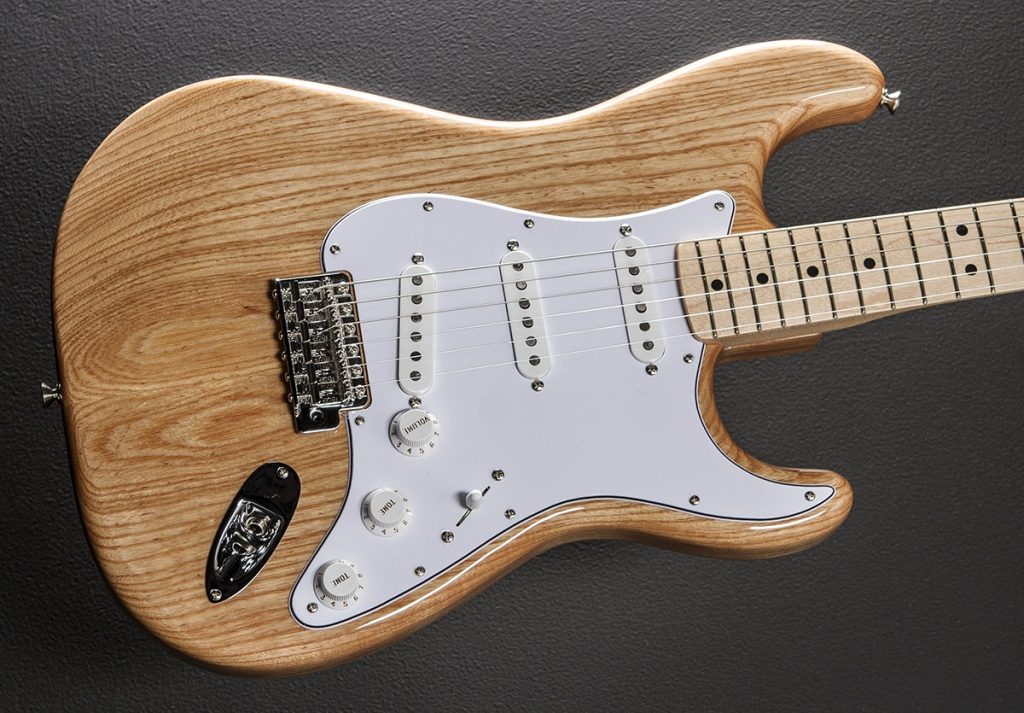
This wood is often used to manufacture guitar necks. It is extremely hard and dense with detailed grain patterns that look very beautiful. Maple has a very bright tone and combined with its intricate figuring, this wood is usually used for a veneer or top laminate on high-end solid body guitars. Some archtops guitars also utilise laminated maple on the top. The hardness of this wood also brings out the trebles in a guitar’s sound. Maple is regularly used for fretboards as well where it enhances the sound.
Rosewood
Most fretboards are made of rosewood. This material is very dense and hard and can be aesthetically appealing, varying in color from near black to variegated brown and blond. Rosewood is often used on guitar bodies, making the instrument quite heavy.
Ebony
Another dense and hard wood, this one is primarily used on fretboards of high-end electric guitars. This wood is usually black and has a silky feel.
Ash
This material is commonly used in solid body guitars. It’s quite hard and resonant, giving the guitar ringing sustain and a bright tone with a detailed mid-range. This wood is light colored and has an attractive grain figuring that’s usually given a clear finish. Swamp ash, in particular, is quite appealing and often used on more expensive electric guitars.
Alder
Alder’s tonal characteristics are similar to ash but this wood is cheaper and less figured. Most solid wood guitars are made of alder. The material is light tan though it’s usually covered with an opaque finish.
Agathis
Looks and possesses the same tonal characteristics as alder, however, it’s not as much resonant. This tonewood is found on modern, budget guitars.
Nato
This Eastern mahogany as is famously known provides a warm resonance. It is extremely strong and is the material of choice in the necks of affordable guitars.
Scale length and nut width
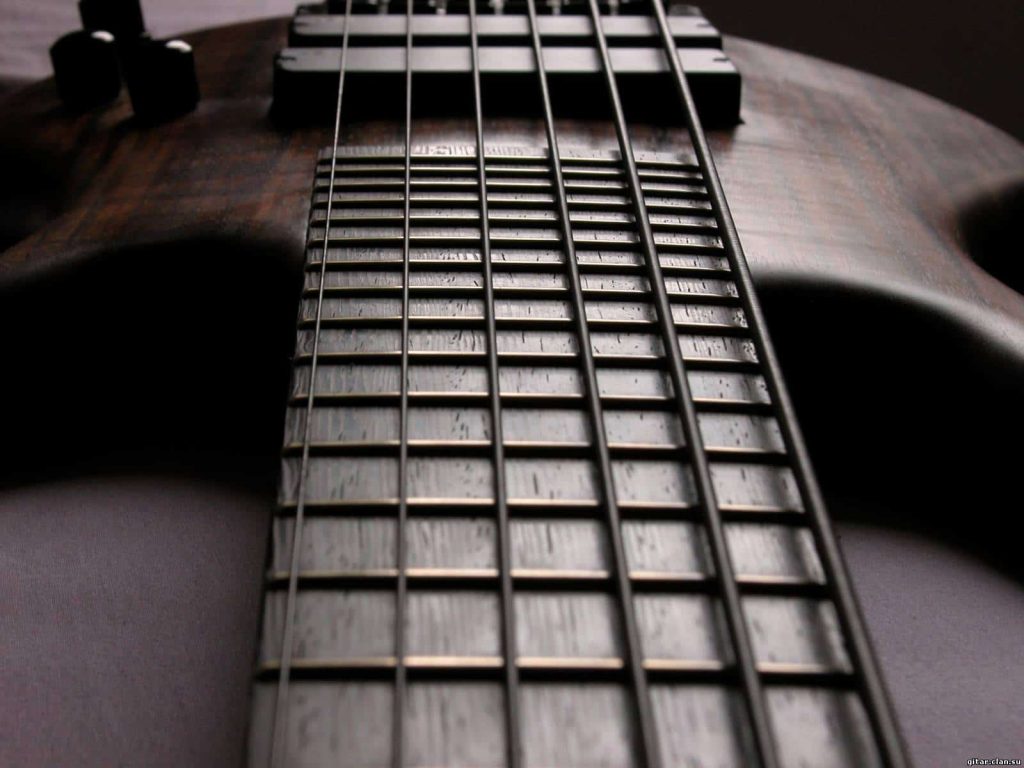
Scale length refers to the distance between the string saddle and the head nut where-in the strings are stretched. How long or short the scale length will affect the sound of your guitar. Ideally, the longer scale length, the more the tension required to get the strings in tune. That is why some players like the “slack” feel of the Gretsch G2420 Streamliner with its 24.75-inch scale length, while others enjoy the biting attack of the tighter strings on the 25.5-inch scale length found on the Fender Classic Vibe 50’s Stratocaster.
Nut width is the gap between the strings at the nut. Individuals with smaller hands will appreciate narrow nut widths of about 1.65 inches, while those who want more room for their finger will fancy the opposite.
Neck
Look at the neck profile and the neck size. The profile describes the shape of the rear of the neck. Flat radius electric guitars will usually have wide, thin neck profiles, while circular fingerboards come with either C or U shaped necks. There is no right or wrong profile but a matter of personal preference.
The neck size, however, should be directly proportional to the size of your hands. Smaller hands will find it easy to wrap their fingers around a narrow-necked instrument. Similarly, larger fingers will find it easy to play wider-necked guitars.
Fingerboard
Check the fingerboard radius to see how flat or round it is. As a general rule of thumb, a flatter radius results to a lower string action, meaning it’s easy to play and bend single notes. On the contrary, a rounder fingerboard follows the natural shape of the fretting hand, thus it’s a lot more chord friendly.
Flatter radiuses range from 9.5 to 16 inches and these are preferred by players who are into modern rock. Anything below 7.25 inches is classified as rounder. Some modern guitars feature compound radius fingerboards, which give the best of both of worlds. In compound configurations, the fingerboard flattens as you move up the neck, allowing you to enjoy your noodling.
Body shape
Your guitar’s shape and finish can spell the distinction between a boring and a rousing instrument, therefore, you’ll want one that looks the part and feels comfortable to play. Since they were first introduced, the Stratocaster, Telecaster, Les Paul and SG are the still the most popular solid body guitar shapes. Similarly, we’ve covered the three types of guitar body shapes to help you select an ideal one.
Bridge
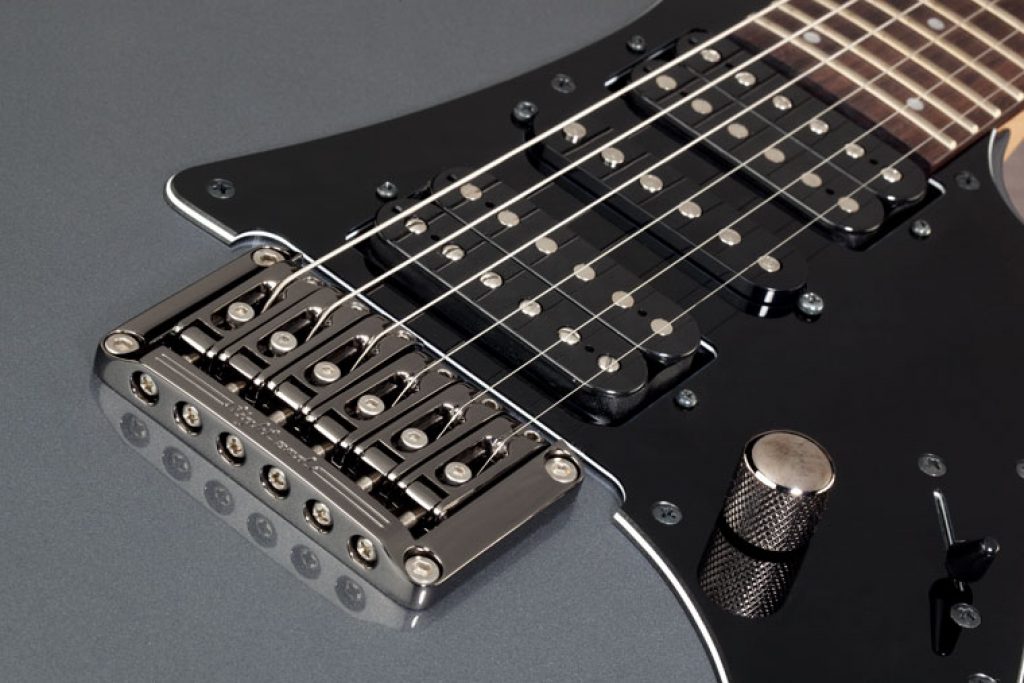 Bridges come in different shapes and forms but ultimately you will have to choose between a simplistic tune-o-matic bridge and the more complex floating bridges. The benefits of tune-o-matic bridges are tuning stability and excellent sustain. Once set up, this bridge requires no tinkering, making it a solid choice for beginners.
Bridges come in different shapes and forms but ultimately you will have to choose between a simplistic tune-o-matic bridge and the more complex floating bridges. The benefits of tune-o-matic bridges are tuning stability and excellent sustain. Once set up, this bridge requires no tinkering, making it a solid choice for beginners.
On the other hand, floating bridges are perfect for performing those special effects and certain employing techniques, which only experienced guitarists know about.
Musician’s level
If you are a total newbie, then you can save a lot by starting with the lower-priced guitars. You’ll need some money to buy accessories such as cable and strap. There’s still a mix of decent guitars in this price range to suit players of all levels and different styles.
Warranty
Some manufacturers don’t offer warranties in this price bracket and even those who give are somehow mean. You can find guitars with lifetime guarantees from our list, like Yamaha, Epiphone DOT and Schecter OMEN-6.







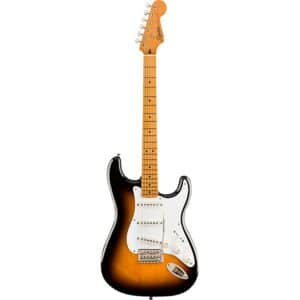
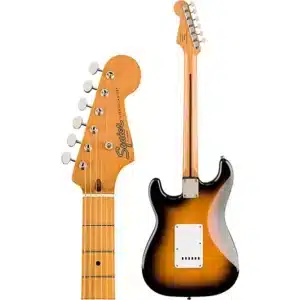
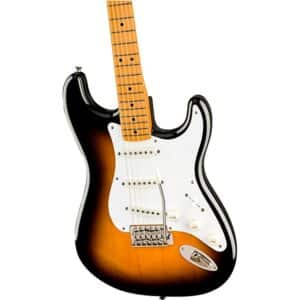
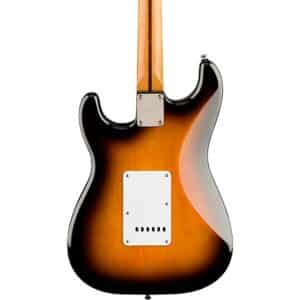
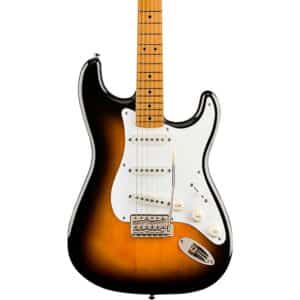
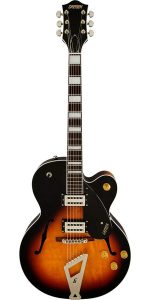
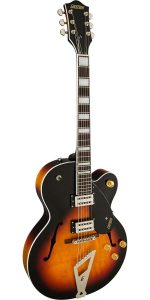
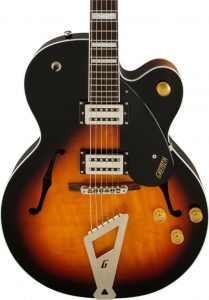
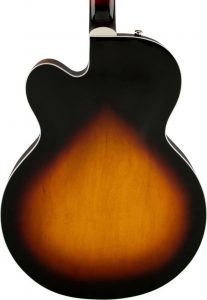
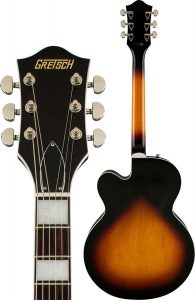
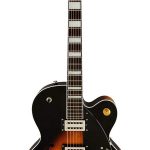
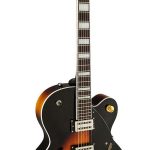
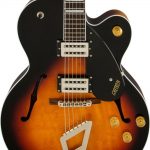
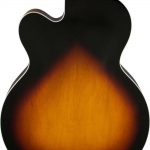
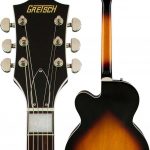
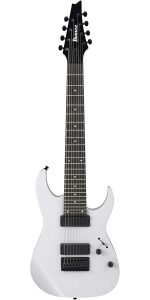
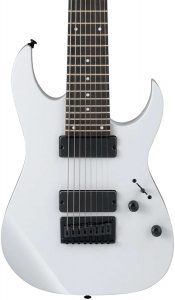
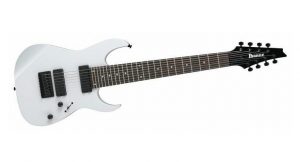
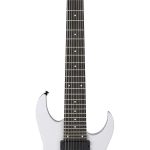
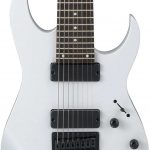
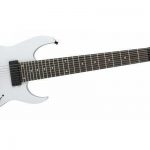
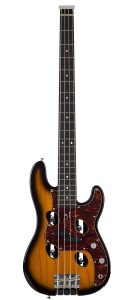
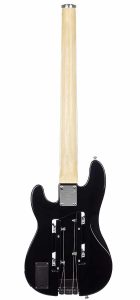
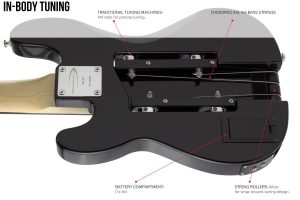
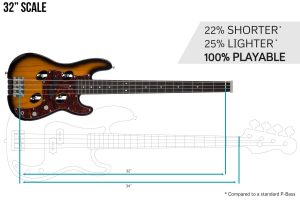
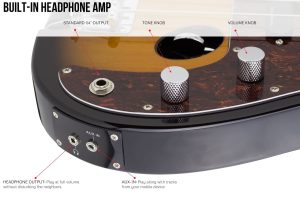
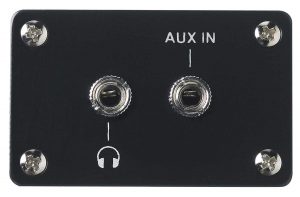
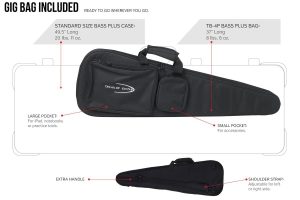
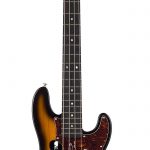
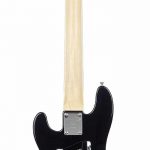
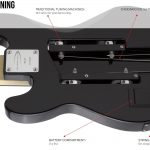
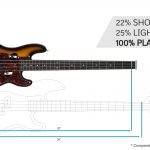
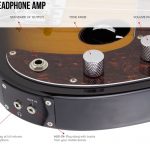
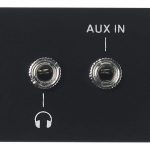
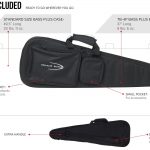
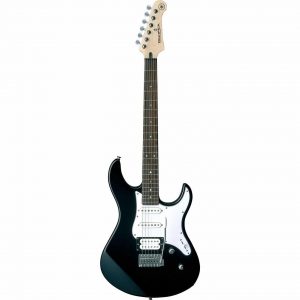
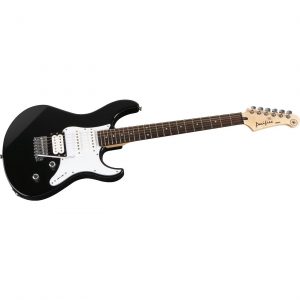
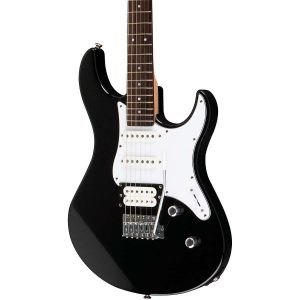
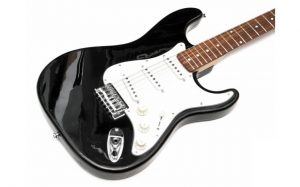
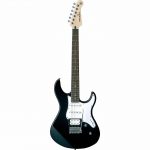
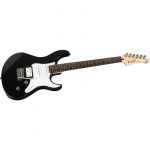
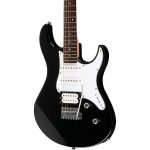

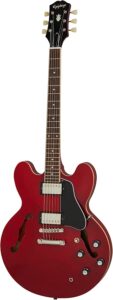

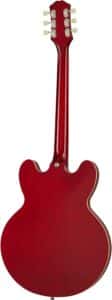

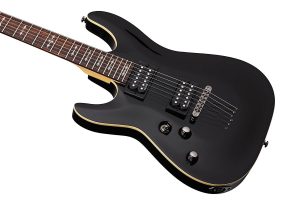
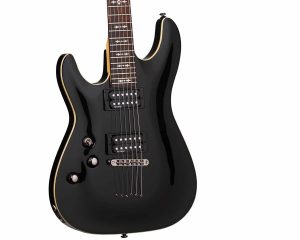
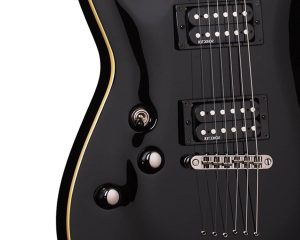
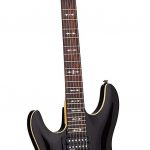
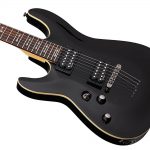
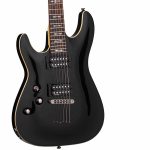
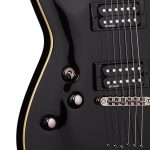





 Bridges come in different shapes and forms but ultimately you will have to choose between a simplistic tune-o-matic bridge and the more complex floating bridges. The benefits of tune-o-matic bridges are tuning stability and excellent sustain. Once set up, this bridge requires no tinkering, making it a solid choice for beginners.
Bridges come in different shapes and forms but ultimately you will have to choose between a simplistic tune-o-matic bridge and the more complex floating bridges. The benefits of tune-o-matic bridges are tuning stability and excellent sustain. Once set up, this bridge requires no tinkering, making it a solid choice for beginners.




